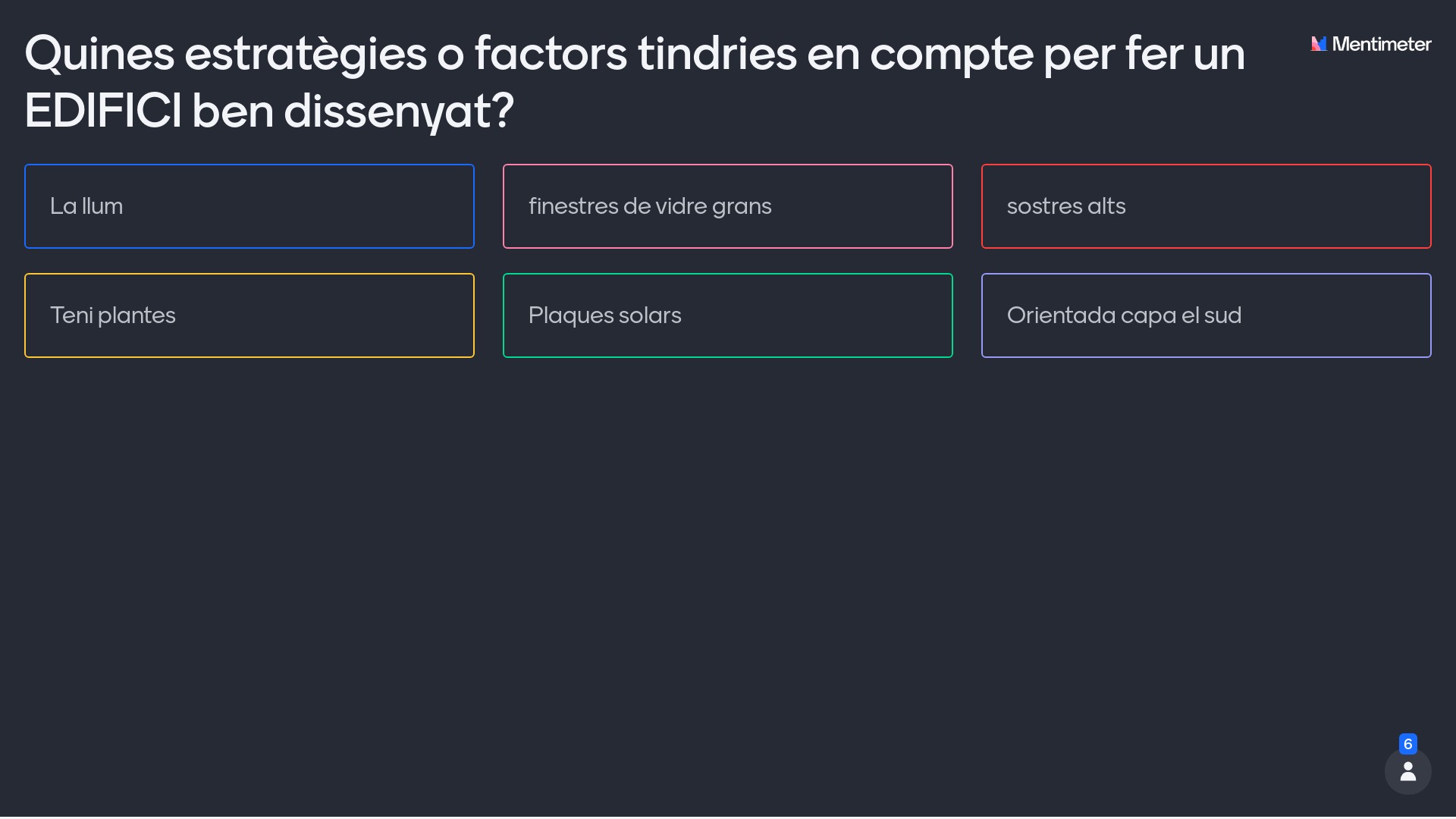What is the natural environment of people? At Barri Besòs High School in Barcelona
Urbanism, architecture and health: what is the natural environment of people? At Barri Besòs High School in Barcelona.
The oldest city identified is 9,000 years old in present-day Turkey, but the first network of cities is thought to have appeared in Mesopotamia 7,000 years ago. Despite this, most of the activities will continue to be carried out in outdoor spaces until the beginning of the industrial revolution in the middle of the 18th century and with it a gradual shift of human activities towards indoor spaces. Currently, in so-called developed countries, people are considered to spend 90% of their time indoors.
The genus Homo has lived mainly in outer spaces for 2,790,000 years … What is the natural environment of people? We design interior spaces but we must not forget that our body and our metabolism has spent most of its evolution outside: from the point of view of health, the best interior is mirrored in space outdoor.
The week of December 13-17, 2021, Biohabita! Together with the Department of Social Sciences of the Barri Besòs Institute, it has developed a workshop session entitled Architecture and town planning are two factors that influence people’s health. The aim was to highlight how urban and architectural decisions play a key role in defining the well-being, comfort and health of people living in cities. It has been debated how the concept of health, a healthy city, goes far beyond the notion of physical health to include well-being, inclusiveness, accessibility, empathy between different groups, equitable social relations, and so on.
In the workshops, students worked in groups to reflect on the different ways we live in cities and buildings.
In a first session, have been collected some historical examples of how urban planning and architectural decisions have influenced the air, water and light of our built environments.
A second session described a number of environmental factors that can be influenced by urban planning and architecture to create healthy environments: air, light, bioelectricity, thermal comfort, sound, activity, water, and materials.
The sessions were invigorated with questions and answers in parallel to the workshop with the Menti application.
The aim is to introduce a different perspective when working on geography and history: how health has historically been taken into account in the design of cities and what factors should be addressed in order to have healthy cities today.
These sessions have received a grant in the General Call for Grants 2021 of Barcelona City Council, in the field of Ecology, urbanism and mobility included in the program of Promotion of studies, activities and initiatives to promote urbanism with a view to gender that contributes to building a fair, sustainable, safe, healthy and barrier-free city.





